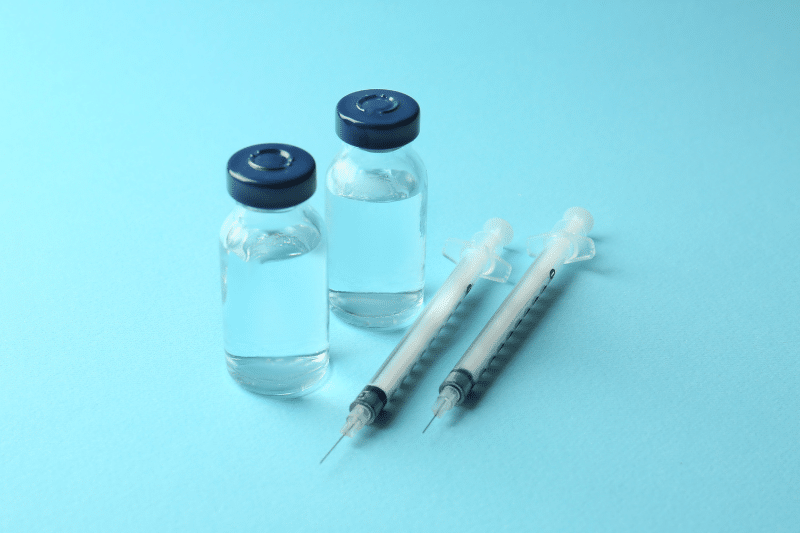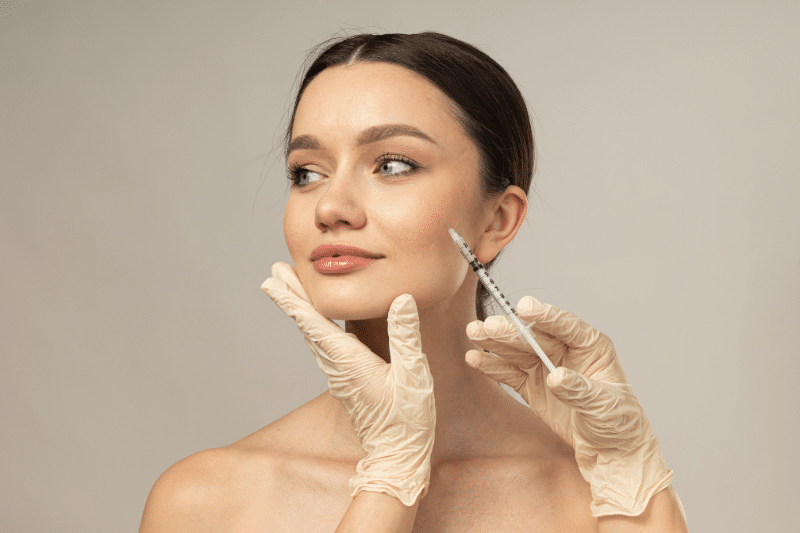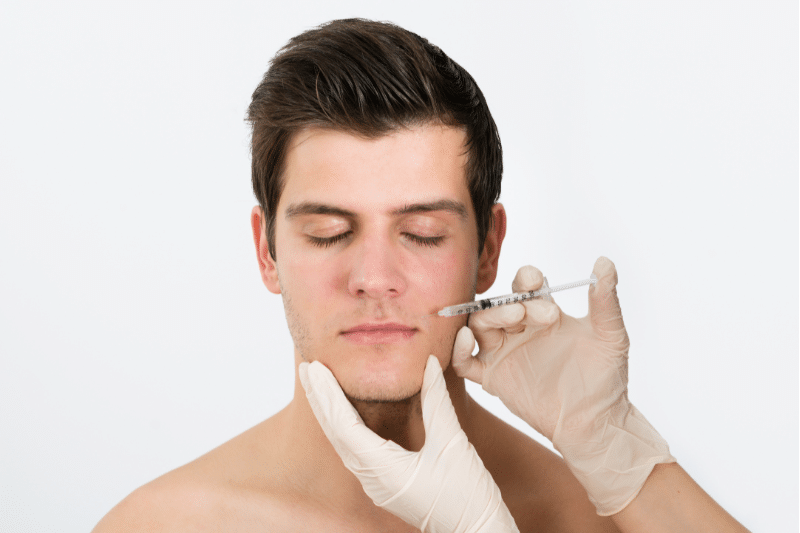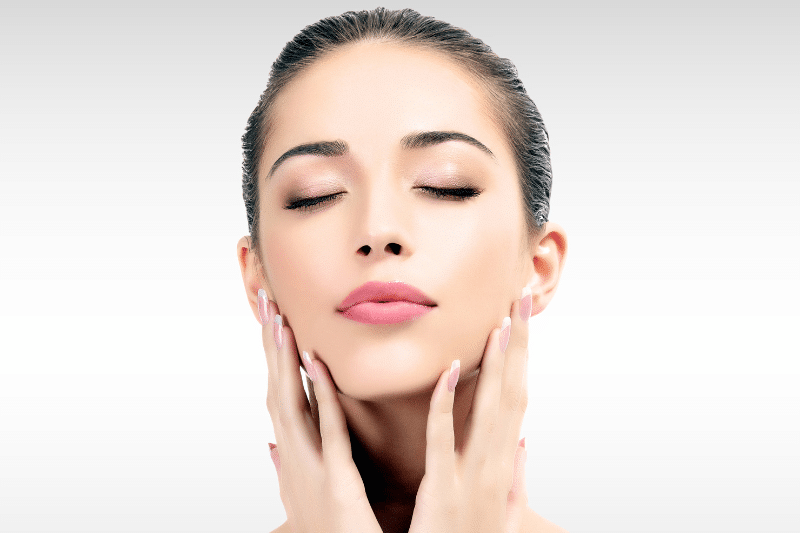Botox Masseter Overview
Masseter Botox is becoming more and more popular as a noninvasive solution for jawline slimming, facial contouring, and temporomandibular joint (TMJ) disorders. In this guide, we will go through Masseter Botox benefits and procedures to the results, risks, and maintenance. As well as will also provide individuals with all the information they need and help deciding on if a Masseter Botox treatment is for them.
What is Masseter Botox?
Masseter Botox is the injection of botulinum toxin type A (Botox) into the masseter muscles. The masseter is one of the main muscles used for chewing and clenching the jaw. Botox is well known for its cosmetic uses, particularly for wrinkles.
But when injected into the masseter muscle it has a different effect. The injections will weaken the already overactive masseter muscle and reduce the size of the muscle which will slim the jawline and help with teeth grinding (bruxism) and TMJ disorders.
What Does Botox Do?
When Botox is injected into the masseter muscles it will relax the muscle by blocking the nerve signals that cause the muscle to contract. Over time this will reduce the size of the muscle and give the jawline a slimmer appearance.
For those who suffer from TMJ disorders or bruxism reducing the activity of the masseter muscles will give significant relief from pain and discomfort.
What Do Masseter Injections Do?
Masseter injections serve dual purposes. Aesthetically, they help contour the face to create a V-shaped jawline, which is a desired face shape in facial aesthetics. Therapeutically, they treat bruxism and TMJ disorders by reducing muscle tension and associated pain.

Botox Masseter – Benefits and Purposes
Jawline Slimming
By reducing the size of the masseter muscles, Botox can slim your jawline.
TMJ and Bruxism Relief
Botox can reduce the tension in the jaw muscles and provide relief from TMJ disorders and teeth grinding.
Non-Surgical
Masseter Botox is a noninvasive procedure with no cuts, so it’s a safer option compared to jaw reduction surgery.
Minimal Downtime
Most people can go back to their normal activities immediately after the procedure.
Quick Treatment
The whole process takes less than 30 minutes.
Helps Manage Masseter Hypertrophy
By reducing the size of the masseter muscles, Botox can help manage the condition and improve facial aesthetics.
Does Masseter Botox Slim Your Jawline?
Yes, Masseter Botox can slim your jawline. By relaxing the masseter muscles the overall bulk of the muscle is reduced and you get a more defined V-shaped jawline. This is achieved by injecting botulinum toxin into the masseter muscles. The results on masseter jaw muscle are subtle but noticeable, especially in people who have overdeveloped masseter muscles due to teeth grinding or excessive chewing.
Does TMJ Botox Slim Your Face?
TMJ Botox which is a Masseter Botox injection can slim the face by reducing the size of the masseter muscles. However, the primary purpose of TMJ masseter Botox work is to relieve the pain and discomfort of TMJ disorders, not facial slimming. The slimming effect is a bonus.
Can You Fix the Jawline with Botox?
Botox can help improve the jawline by reducing the size of the masseter muscles which contributes to a more defined and slimmer jawline. Masseter muscle Botox targets this muscle to alleviate discomfort and improve dental health. But if you want to correct issues like a weak chin or excess fat in the jawline area, other treatments like dermal fillers or liposuction might be more suitable.
Does Botox Reduce Jaw Size?
Botox can reduce the appearance of jaw size by decreasing the size of the masseter muscles. The reduction in muscle bulk will give you a more streamlined and defined jawline especially if you have a square or broad jaw due to hypertrophy of the masseter muscles.
Does Masseter Botox Get Rid of Buccal Fat?
Masseter Botox doesn’t get rid of buccal fat. Buccal fat is in the cheeks and removal of buccal fat requires a surgical procedure. But the slimming effect of Masseter Botox can make the face look more harmonious and balanced with facial wrinkles and the cheeks less prominent.
What is the Main Use of Masseter Botox?
The main uses of Masseter Botox injections are twofold: aesthetic and therapeutic. The use of botulinum toxin injection for both cosmetic enhancements and medical issues such as bruxism, TMJ disorders, and tension headaches is well-documented. The aesthetic is to slim the jawline and shape the face. Therapeutic is to alleviate TMJ disorders and bruxism by reducing the activity of the masseter muscles.

Botox Masseter – Procedure and Techniques
What are the Steps in the Masseter Botox Procedure?
The Masseter Botox procedure is quite simple and involves the following steps:
Consultation
Before the procedure, you will have a consultation with a qualified provider to discuss your goals and if Masseter Botox is right for you.
Marking the Injection Sites
The provider will mark the areas where the Botox will be injected. These are usually in the lower part of the face where the masseter muscles are located.
Cleaning the Area
The injection sites will be cleaned with an antiseptic solution to prevent infection.
Botox Injections
Using a fine needle the provider will inject the Botox into the masseter muscles. The number of injections will depend on the size of the muscle and the desired outcome.
Aftercare
After the injections, you may be given instructions on how to take care of the treated area but most people can go back to their normal activities right away.
How Many Units for Masseter Botox?
The number of units for Masseter Botox depends on the size of the masseter muscles and the result you want to achieve. Typically 2-3 units per side but this can vary. Your provider will determine the number of units based on your anatomy and goals.
Where Do You Inject for Masseter Botox?
Masseter Botox is injected into the jaw tension in the masseter muscles which are on each side of your jaw. These muscles are for chewing and clenching the jaw. The injections are usually placed in the lower part of the face, just above the angle of the jaw, where the masseter muscles are most prominent.
Are 10 Units Enough for Masseter?
The amount of Botox for the large masseter muscles varies depending on the individual’s muscle size and the result you want to achieve. 10 units per side may be enough for subtle results for smaller masseter muscles, but larger muscles may need more units to get the desired effect. Your provider will determine the dose during your consultation.
20 Units a Lot for Masseter?
20 units per side is a common dose for the masseter muscles and can give noticeable results. This amount will reduce the muscle size and slim the jawline without weakening the muscle too much. But the dose will be determined by your individual needs and goals which your provider will assess during your consultation.
How Painful is Masseter Botox?
Masseter Botox is generally well-tolerated, with most patients experiencing only mild discomfort during the injections. The needles used are very fine, and the injections are typically quick.
Some providers may offer a topical numbing cream to minimize discomfort. After the procedure, there may be slight soreness or tenderness in the treated area, but this usually resolves within a few days.

Botox Masseter – Side Effects, Risks, and Pitfalls
As with any medical procedure, Masseter Botox comes with potential side effects and risks. Common side effects include:
Mild Bruising or Swelling
This may occur at the injection sites and typically resolves within a few days.
Soreness
Some patients may experience tenderness in the treated area, which usually subsides within a week.
Headache
A mild headache can occur after the injections, but this is generally short-lived.
What Are the Risks of Injecting the Masseter Muscle?
Injecting the masseter muscle is an art. Here are the pitfalls:
-
Too much Botox can relax the masseter muscles too much and you can’t chew or speak properly.
-
If the Botox is not distributed evenly on both sides, you’ll have an asymmetrical jawline.
-
Some patients will experience temporary weakness in their jaw muscles which can affect chewing and facial expressions.
What’s the Downside of Botox for TMJ?
While Botox can help with TMJ symptoms, there are some downsides to consider:
- Ongoing treatments can get expensive over time.
- Botox is temporary and you’ll need to get it done regularly to maintain the results.
- Reducing the strength of the masseter muscles can sometimes affect chewing and speaking but this is usually temporary.
Can Jaw Botox Go Wrong?
Like any medical procedure, jaw Botox can go wrong if not done correctly. Here are some complications for overactive jaw muscles:
-
If the Botox is not injected evenly, it can result in an uneven appearance.
-
Over-relaxation of the masseter muscles can make chewing difficult, though this effect is temporary.
-
As with any injection, there is a risk of infection. Although it’s rare with proper technique and care.
What Can Go Wrong with Masseter Botox?
While Masseter Botox is generally safe, potential issues include:
Bruising and Swelling
Though temporary, bruising and swelling can occur at the injection sites.
Inconsistent Results
Results may vary depending on the skill of the injector and the patient’s muscle structure.
Unexpected Side Effects
Some patients may experience side effects like headaches, soreness, or muscle weakness.
What Are the Cons of Botox for Jaw Clenching?
While Botox can be effective for treating jaw clenching, there are some cons to injecting Botox to consider:
Temporary Results
Botox effects are temporary, requiring repeat treatments every 3-6 months.
Cost
Ongoing treatments can be costly over time.
Potential Side Effects
There is a risk of side effects such as bruising, swelling, and muscle weakness.
Can You Have Too Much Masseter Botox?
Yes, it is possible to have too much Masseter Botox. Over-injecting the masseter muscles can lead to excessive weakening, which can cause problems with chewing, speaking, and facial expressions.
It can also lead to an unnatural appearance if the facial muscles become too small in comparison to the rest of the face. It’s important to work with an experienced provider who can administer the correct dosage for your needs.

Results and Effectiveness
How Long Do the Results Last?
Masseter Botox results last 3-6 months. Over time the Botox will wear off as the body metabolises the toxin and muscle activity returns to normal. You will need to top up regularly to maintain the results.
How Long Does Masseter Botox Last?
Masseter Botox lasts 3-6 months. Results can vary depending on individual metabolism, dose, and frequency of treatments. Some may need to top up more often, others may get longer-lasting results.
How Long Should Masseter Botox Last?
Masseter Botox should last around 3-6 months. After that the muscle activity will return and the Botox effects will wear off. To maintain the results you will need to top up every few months.
How Long Do Masseter Injections Last?
Masseter injections like other Botox treatments last 3-6 months. Duration can vary but most patients will need to follow up to maintain the benefits.
How Long Does Masseter Botox Last?
Jaw Masseter Botox lasts around 3-6 months. After that, the masseter muscles will start to get stronger and bigger and you will need to top up to maintain the slimming and therapeutic effects.
How Long Does Jaw-Slimming Botox Last?
Jaw-slimming Botox typically lasts for 3 to 6 months. The slimming effect is due to the reduction in masseter muscle size, which gradually returns as the Botox wears off. Regular treatments are needed to sustain the jaw-slimming effect.
Does Masseter Botox Slim Your Face?
Yes, Masseter Botox can slim your face by reducing the size of the masseter muscles. This creates a more contoured and V-shaped appearance, particularly in individuals with prominent masseter muscles. The slimming effect is most noticeable in those with square or broad jaws caused by masseter muscle hypertrophy.

Maintenance, Duration, and Cost
What is the Maintenance and Duration of the Procedure?
Maintenance for Masseter Botox involves regular follow-up treatments every 3 to 6 months to sustain the desired effects. The procedure itself is quick, typically taking less than 30 minutes, with minimal downtime required. Most patients can return to their normal activities immediately after the treatment.
How Often Should I Get Botox for Masseter Muscle?
To maintain the effects of Masseter Botox, most patients will need to get treatments every 3 to 6 months. The exact frequency depends on how quickly your body metabolizes the masseter Botox cost, and how long the results last for you. Regular treatments are necessary to keep the masseter muscles relaxed and maintain the jaw-slimming effect.
How Much Does Jawline Slimming Cost with Botox?
The cost of jawline slimming with Botox can vary depending on the provider’s experience, the geographic location and the amount of Botox needed. On average, the cost ranges from $300 to $800 per session. Since results are temporary, ongoing treatments are required, which can add to the overall cost over time.
What is the Total Cost of the Procedure?
The total cost of the Masseter Botox procedure includes the initial consultation, the cost of the Botox injections, and any follow-up treatments needed to maintain the results. On average, the total cost per session can range from $300 to $800, with ongoing treatments required every 3 to 6 months to sustain the effects.

Candidacy and Suitability
Who is the Right Candidate?
The right candidate for Masseter Botox is someone who:
- Firstly, ideal for individuals with overdeveloped masseter muscles. Particularly want to achieve a more contoured and V-shaped face.
- Secondly, those experiencing pain or discomfort from TMJ disorders or teeth grinding. They can benefit from the therapeutic effects of Botox.
- Thirdly, it is a great option for those looking to further enhance their facial appearance. As well as relieve symptoms without undergoing surgery.
- Candidates should have realistic expectations about the results. Also understand that the effects are temporary, requiring ongoing treatments.
- Lastly, suitable for individuals with overactive masseter muscles. Especially want to alleviate symptoms like teeth clenching and jaw pain.
How to Tell if You Need a Masseter Botox?
You might need it if:
- You have a square or broad jawline. Caused by enlarged masseter muscles.
- You experience jaw pain or discomfort due to TMJ disorders or bruxism.
- You desire a more contoured face without undergoing surgery.
- You have tried other treatments for TMJ or bruxism without success.
Is Masseter Botox a Good Idea?
It can be a good idea for those seeking a non-invasive way to slim their jawline or relieve symptoms of TMJ and bruxism. It’s a quick procedure with minimal downtime and offers both aesthetic and therapeutic benefits. However, it’s essential to consult with a qualified provider to determine if this treatment is right for you.
Is Botox in the Masseter Worth It for Jaw Pain?
Indeed, masseter injections are worth it for many individuals seeking facial slimming or relief from jaw-related issues. If you want to slim your jawline without surgery or if you have jaw or facial pain often due to TMJ or bruxism, Masseter Botox can be very beneficial. Nonetheless, it’s a noninvasive procedure with minimal downtime so it’s a popular choice for those looking for a quick fix. However, the value depends on your specific goals and whether you’re willing to commit to ongoing treatments to maintain the results.
Furthermore, call us or schedule a teleconsultation to inquire more about treating bruxism, facial contour, or cosmetic procedures. To discuss your aesthetic goals for improving your facial structure.










